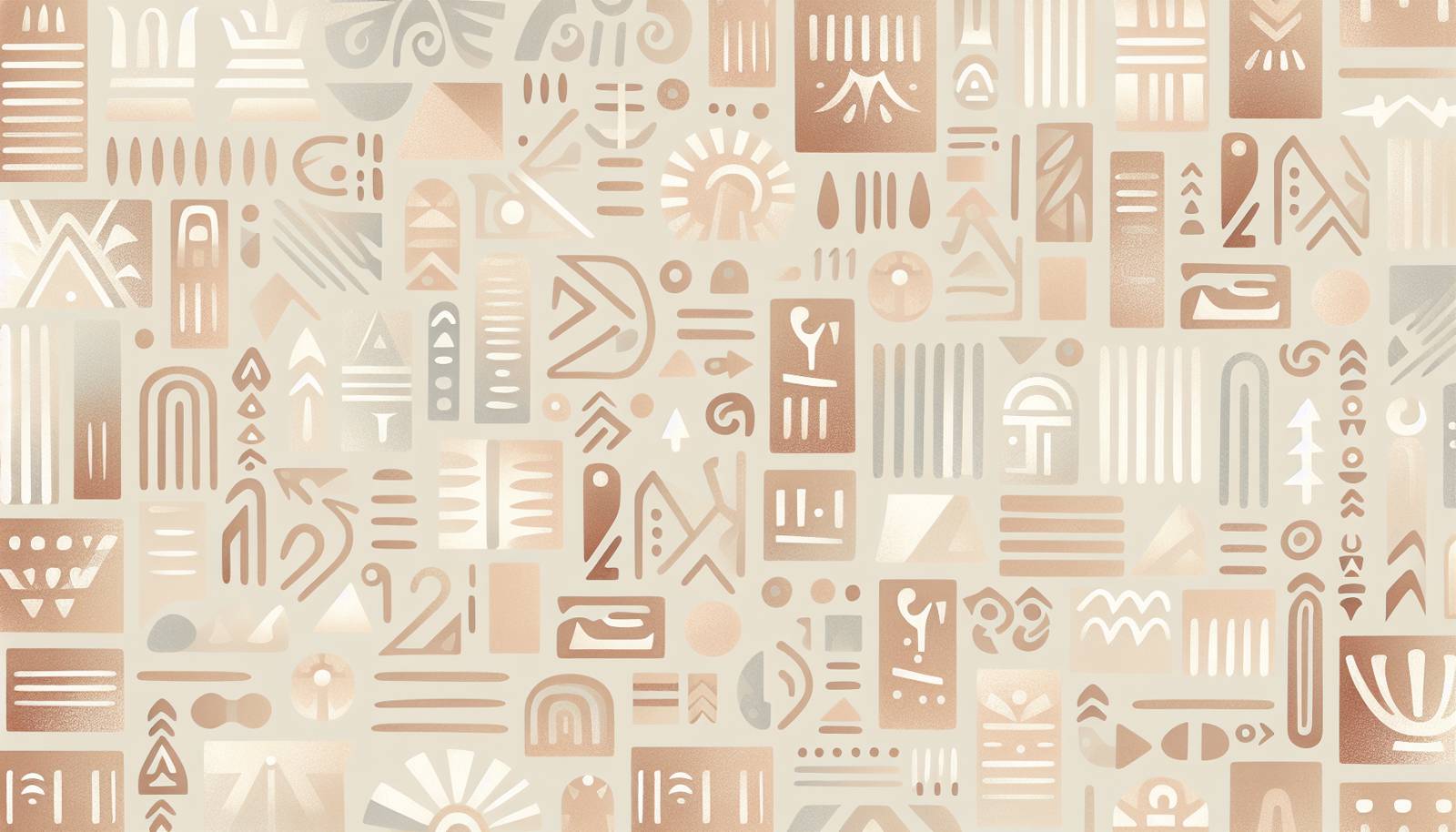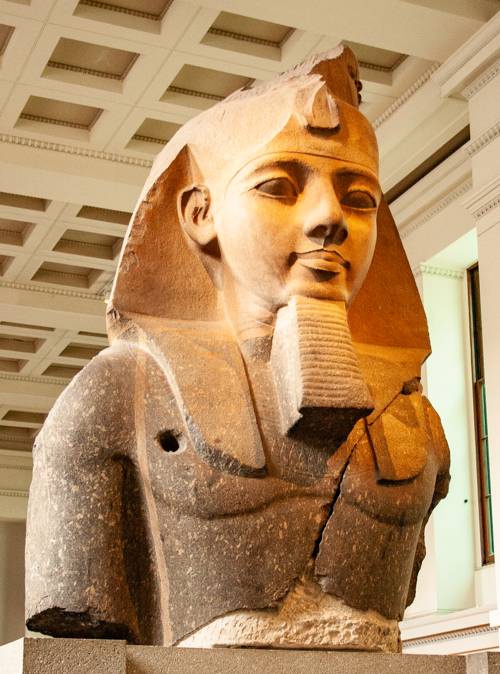
FAQ About Ramesses II

Who was Ramesses II?
Ramesses II, also known as Ramesses the Great, was the third pharaoh of the Nineteenth Dynasty of Egypt. He ruled from 1279 to 1213 BC, making his reign one of the longest in Egyptian history. Ramesses II is renowned for his military leadership, extensive building programs, and the creation of many monuments and temples that solidify his legacy as one of Egypt's most powerful and celebrated pharaohs.

What were some of the most significant building projects initiated by Ramesses II?
Ramesses II is credited with numerous building projects that have left a significant mark on ancient Egyptian architecture. Some of the most notable projects include the Ramesseum, his mortuary temple in Thebes, the temples at Abu Simbel, which were relocated in the 1960s to avoid flooding from the Aswan High Dam, and the expansion of the temple complex at Karnak. These constructions exemplified his power and divine kingship.

How did Ramesses II contribute to Egyptian military history?
Ramesses II was a formidable military leader, and his reign included several military campaigns, particularly against the Hittites. His most famous battle was the Battle of Kadesh in 1274 BC, which is one of the earliest battles in recorded history. Although the battle ended in a stalemate, it led to the first known peace treaty between the Egyptians and the Hittites. Ramesses II's military exploits were extensively commemorated in temple reliefs and inscriptions.

What is the significance of the Battle of Kadesh in Ramesses II's reign?
The Battle of Kadesh is significant for several reasons. Not only is it one of the earliest battles recorded in history, but it was also pivotal in establishing Ramesses II's reputation as a warrior king. Despite the battle not resulting in a clear victory, it eventually led to the first known peace treaty in history, known as the Egyptian-Hittite Treaty. This battle has been depicted often in ancient Egyptian art and scripts, showcasing Ramesses II's tactical acumen and military ambition.

What legacy did Ramesses II leave behind in Egypt?
Ramesses II left a vast legacy, marked by the extensive architecture that still stands today, which highlighted Egypt's wealth and power during his reign. His efforts in building monumental structures ensured that his name and divine royalty were immortalized. His reign also reflected in the stability and prosperity of Egypt, strengthened by his diplomatic and military actions. Ramesses II's contributions to art, culture, and the political landscape had a lasting impact on successive generations in Egypt.

How long did Ramesses II rule Egypt?
Ramesses II ruled Egypt for approximately 66 years, from 1279 to 1213 BC. His lengthy reign allowed him to implement numerous projects and campaigns that shaped the course of Egyptian history. This period of stability and prosperity underscores his status as one of Egypt's most famous and long-serving pharaohs.

What was the relationship between Ramesses II and the Hittites?
The relationship between Ramesses II and the Hittites transitioned from conflict to diplomacy during his reign. Initially, the two powers clashed, most notably at the Battle of Kadesh. However, this confrontation ultimately led to peace negotiations, resulting in the Egyptian-Hittite Treaty, the first known peace treaty in history. This diplomatic achievement enhanced Egypt's international standing, showing Ramesses II's prowess not just as a warrior but also as a statesman.

Where is Ramesses II buried?
Ramesses II was originally buried in the Valley of the Kings, in tomb KV7. Over time, like many other royal tombs, his tomb suffered from looting and damage. His mummy was later discovered in the Deir el-Bahri cache, in the tomb of Amenhotep II, where it had been relocated to protect it from grave robbers.

What is Ramesses II's connection to the biblical story of Exodus?
Ramesses II is often speculated to be the pharaoh referred to in the biblical story of the Exodus, which tells of the Israelites' departure from Egypt. While traditional and popular narratives associate him with this event, there is no definitive archaeological evidence to confirm that Ramesses II was the pharaoh at the time of the Exodus. This association largely stems from references to a city, Pi-Ramesses, which he established as a new capital in the Nile Delta.

How has Ramesses II been depicted in art and culture?
Ramesses II has been depicted extensively in various forms of Egyptian art and culture, including temple reliefs, statues, and inscriptions. He is often portrayed as a heroic figure in battle scenes and as a divine ruler performing religious rituals. His image was cultivated to emphasize his strength, divinity, and success, reflecting the grandeur of his reign. His influence extends into modern culture, inspiring films, literature, and scholarly studies on ancient Egypt.

What innovations in architecture are attributed to Ramesses II?
Ramesses II is credited with pioneering architectural innovations, especially in temple design and construction. He was known for constructing massive statues and large-scale reliefs, which became hallmarks of his architectural style. The use of sun alignment in the temples at Abu Simbel, for example, demonstrates an advanced understanding of astronomy and engineering. His projects often featured grand entrances, hypostyle halls, and intricate carvings that set new standards in ancient Egyptian architecture.

What was the significance of the temples at Abu Simbel to Ramesses II's reign?
The temples at Abu Simbel were built to commemorate Ramesses II's victory at the Battle of Kadesh and to intimidate his enemies. Carved into solid rock, these temples are considered one of his most daring and grandiose building projects. The main temple is oriented so that twice a year, the sun shines directly on the inner sanctum, lighting up statues of the god Amun and Ramesses himself, symbolizing his divine status and engineering prowess. The site emphasizes his power and commitment to the gods of Egypt.

Did Ramesses II have a large family?
Yes, Ramesses II had a very large family. It is documented that he fathered over 100 children with various wives. His principal wife was Queen Nefertari, one of Egypt's best-known queens, and he constructed magnificent tombs for her and other members of his family, reflecting the prominent roles they played in his court and personal life. The numerous children and their respective roles helped to establish and secure his dynasty.

What role did religion play during Ramesses II's rule?
Religion played a central role during Ramesses II's rule. He was considered a divine ruler, believed to be the living embodiment of the god Horus and a son of the god Ra. This divine kingship was crucial in justifying his power and authority. Many of his building projects, such as temples and statues, emphasized his god-like status and served religious purposes, ensuring that religious rites and offerings were maintained to honor the gods and his own divine ancestry.

What was the purpose of the Ramesseum?
The Ramesseum was a mortuary temple constructed by Ramesses II, dedicated to Amun and the cult of the king in his afterlife. Located on the west bank of the Nile near Thebes, it was part of a larger complex that included a palace and workshops. The Ramesseum was adorned with intricate reliefs and inscriptions that celebrated Ramesses II's achievements and ensured his spirit would be immortalized and continue receiving offerings and veneration long after his death.

How did Ramesses II maintain power over Egypt for so long?
Ramesses II maintained power through a combination of military strength, religious influence, and extensive construction projects. His ability to manage foreign relations, notably with the Hittites, secured peace and stability for Egypt. He was skilled in promoting his image as a divine ruler, which reinforced his authority. Building projects like temples and statues not only glorified his reign but also acted as a means of propaganda, broadcasting his power and legacy across the kingdom.

What was the capital city during Ramesses II's reign?
The capital city during Ramesses II's reign was initially Thebes, but he later established a new city named Pi-Ramesses in the Nile Delta. Pi-Ramesses served as a strategic and administrative center and was close to the eastern borders, allowing for better military oversight and trade control. The city featured spacious avenues, temples, and palatial structures that reflected its importance during his reign and illustrated his prowess in urban development.

What written records are available from Ramesses II's time?
Numerous inscriptions, temple reliefs, and papyri from Ramesses II's time have survived, providing insights into his reign. These include historical records of battles, like those of the Battle of Kadesh depicted on temple walls, extensive building inscriptions, and official decrees. The Hittite-Egyptian Peace Treaty is one of the notable written agreements from his time, reflecting his diplomatic efforts. These records have been crucial for understanding the political, social, and cultural context of his reign.

How is Ramesses II viewed by historians today?
Historians view Ramesses II as a master tactician in both military and political spheres, a capable administrator, and a ruler who profoundly influenced Egyptian culture and architecture. While some criticize his egoistical tendencies, evident from his numerous self-aggrandizing monuments, his ability to maintain Egypt's stability and prosperity through diplomacy and military prowess is widely acknowledged. His reign is often considered a pinnacle of ancient Egyptian civilization, marked by artistic and architectural achievements.

What happened to Ramesses II's mummy after his death?
After Ramesses II's death, his mummy was originally placed in his tomb in the Valley of the Kings. Over the centuries, tomb robbers threatened many royal burials, including his. Consequently, his mummy was relocated to a secure location in the Deir el-Bahri cache for protection. Discovered in 1881, the mummy is now displayed at the Egyptian Museum in Cairo, where it has been subjected to studies that continue to yield information about his health and the embalming practices of his time.
